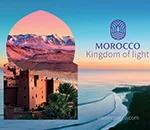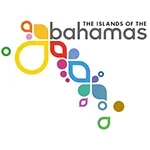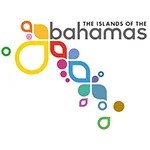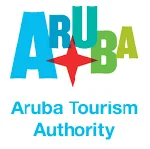 Melanie Neff Melanie Neff |
Travel public relations professionals are well-versed in crisis communications, considering that working in the travel industry prepares you to expect the unexpected. With that said, no one saw COVID-19 coming, and for a while, it seemed like everything came to a halt. The global pandemic created a ripple effect that impacted all industries, and businesses had to move fast to reinvent their offerings in order to stay afloat. COVID-19 has created a significant shift for PR practitioners, especially in the travel industry. It has challenged our strategies, and now more than ever, we have to think outside the box during a time of crisis.
With many hotels and destinations closed, PR professionals had to get creative in approaching media and sharing relevant information for upcoming stories. We quickly became a source of information for our media contacts. Our clients became the expert voices leading webinars, podcasts and online trainings when information and future forecasts seemed to be lacking.
While a focus on crisis preparedness is essential, brands also need to look at ways to retain consumer loyalty for future travel peaks, especially considering many destinations and hotels will open at around the same time and competition will be fierce.
| This article is featured in O'Dwyer's Jul. '20 Travel & Int'l PR Magazine. |
Now that travel is starting to open for business, brands need to develop flexible recovery plans to adjust to this new reality. The travel and hospitality industry is aware of the importance of showing travelers its commitment to safety without compromising a memorable vacation experience. We’ve heard this question in many of the travel industry webinars: how do we make cleanliness and safety protocols interesting and “mediable?” Like many COVID-19-related questions, the answer isn’t simple; as storytellers, PR professionals have to go beyond the safety protocols and also tell the human stories that are so intertwined with the essence of travel. It’s a people industry, after all. The goal is to amplify the good, engage the travel community and show the brand’s humanity.
For the time being, trade events, media visits and media tours have been placed on hold, yet brands should continue to share updates with outlets through online press conferences, webinars and digital interviews. We held the first digital press conference with Barbados’ Minister of Tourism and International Transport the Hon. Kerrie Symmonds on April 28, where he briefed the media about COVID-19 tourism updates. Media from across the globe attended the press conference and left with a wealth of information regarding how the island has managed the pandemic.
As the world begins to return to some sense of normalcy, many travel writers are ready to visit destinations and experience all the new safety protocols put in place, from airport security to hotel check-ins. When it comes to press trips, the recommendation for the moment is to host individual visits and small family groups. A brand’s biggest ambassador is someone who’s already experienced it, which is why our agency will work with contacts that are already familiar with the properties and destinations we represent. Before scheduling these trips, brands should survey the media to understand what they’re looking for as they venture into this new world of travel. As for the activities during their visit, itineraries should allow the media to see first-hand all the new safety protocols in the hotels, destinations and tours, as well as include wellness and nature-focused activities. Transparency is key at this stage. Studies have shown that individuals are excited to travel and want to have meaningful experiences and the opportunity to be surrounded by nature, and this is true for media as well.
According to Cisco, video is expected to make up 82 percent of all internet traffic by 2021. Video content will become essential as brands continue to develop their media and influencer strategies. By working with TV, Youtubers and Vloggers, brands will be able to amplify the message and showcase through their work the new experience of traveling post-COVID-19.
With influencer engagement increasing over 40 percent, influencer strategies will be crucial as brands begin to navigate through the next normal. Social media will continue to play a central role in recovery plans. Hotel and destinations’ social media channels help these entities stay top-of-mind to consumers and inspire future travel, especially as many consumers are working from home and smartphone usage has increased. For example, Cala Luna, a boutique hotel in Costa Rica, used social media during lockdown to share recipes for virtual happy hours, meditation tips and nature videos to stay engaged with their followers.
Trust and transparency should be a central focus when developing communications strategies. With this in mind, there will be value in working with influencers who have established a niche-within-a-niche, for example, a travel blogger that only stays in boutique hotels that give back to local communities. Likely, their following is also interested in those topics. By working with highly-engaged micro-influencers, brands can leverage the trust and relationship they have with their audience and have them answer—almost in real-time—some of the most frequently asked questions that will arise post-COVID-19 travel.
Brand partnerships and influencer relations need to strive for authenticity. Celebrations are a great way to showcase authentic storytelling. Many celebrations like birthdays, anniversaries and weddings had to be placed on pause due to the pandemic; these now represent a great opportunity to invite influencers to redo some of these significant milestones. At the same time, these initiatives may encourage followers to do the same.
With limited budgets and resources, tracking ROI will become more important than ever. To ensure brands can measure the success of campaigns, initiatives like providing each influencer with special booking codes they can share with their following with access to a special rate will need to be part of the strategy.
Recovery plans should also include giveaways with media partners and influencers to get people excited about travel. Giving back to the community will be crucial to showcase the brand’s humanity. A great example is Palladium Hotel Group’s “Capeless Heroes” promotion, which offers up to a 40 percent discount to first responders when making a reservation at any of the brand’s 48 hotels. Another example of an initiative that gives back to the community is Barbados’ “We Care” campaign, which will give away a seven-day vacation to Bajan first responders.
As we continue to navigate the new media landscape post-COVID-19, it’s imperative to revisit and readjust plans. The industry is in a state of transformation, and brands need to reinvent themselves, explore new opportunities and try new things.
***
Melanie Neff is an account executive at CIIC.


 Weber Shandwick is providing PR and marketing communications services to the Moroccan National Tourist Office in New York.
Weber Shandwick is providing PR and marketing communications services to the Moroccan National Tourist Office in New York. Finn Partners has filed its six-month contract with the Bahamas Ministry of Tourism, Investments & Aviation, which is worth $240K.
Finn Partners has filed its six-month contract with the Bahamas Ministry of Tourism, Investments & Aviation, which is worth $240K. Weber Shandwick wrapped up its work for the Ministry of Bahamas at the end of 2023.
Weber Shandwick wrapped up its work for the Ministry of Bahamas at the end of 2023. The Aruba Tourism Authority is boosting its budget 29.4 percent to $2.2M at Zeno Group, according to its 2024 contract, effective Jan. 1.
The Aruba Tourism Authority is boosting its budget 29.4 percent to $2.2M at Zeno Group, according to its 2024 contract, effective Jan. 1. As inflation continues to impact spending, consumers are revisiting their list of what they’re willing to spend more of their money on. Luckily for those in the travel industry, experiences seem to be trending up on the “splurge” list.
As inflation continues to impact spending, consumers are revisiting their list of what they’re willing to spend more of their money on. Luckily for those in the travel industry, experiences seem to be trending up on the “splurge” list. 


 Have a comment? Send it to
Have a comment? Send it to 
No comments have been submitted for this story yet.